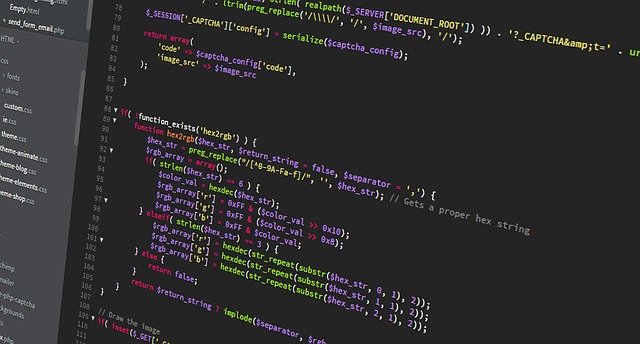What is phpMyAdmin & why do I need it?
 Managing databases can be abstract and closely related to the syntax of programming languages. To simplify operation, graphical interfaces like PhpMyAdmin exist, providing a graphical interface for data querying and manipulation of individual parameters. This tool allows numerous procedures to be carried out through a user-friendly interface, which would otherwise require an administrator to perform via a command line with text input. It enables the creation, management, and manipulation of database content. PhpMyAdmin is specialised for the widely used format MySQL and its derivative MariaDB.
Managing databases can be abstract and closely related to the syntax of programming languages. To simplify operation, graphical interfaces like PhpMyAdmin exist, providing a graphical interface for data querying and manipulation of individual parameters. This tool allows numerous procedures to be carried out through a user-friendly interface, which would otherwise require an administrator to perform via a command line with text input. It enables the creation, management, and manipulation of database content. PhpMyAdmin is specialised for the widely used format MySQL and its derivative MariaDB.
How does PhpMyAdmin work?
PhpMyAdmin is a web interface that provides a user with direct access to a MySQL or MariaDB database. Through this graphical tool, the user can interact with the database without needing advanced knowledge of the commands used for databases. It translates the selected function into the corresponding commands and applies them to the server or a specific database.
PhpMyAdmin is written in the programming language PHP, like most Content Management Systems (CMS), and generates a dynamic website by calling various scripts. This allows access both locally and remotely through a web browser. The web interface uses a combination of username and password for user authentication - two-factor authentication to enhance security has been possible since the release of version 4.8.0 in 2017. The functionality partly depends on the PHP version being used - compatibility issues may arise with an older PHP version due to new commands or changed syntax.
Secure the perfect PhpMyAdmin web hosting now
Go to the PhpMyAdmin web hosting comparison
What features does PhpMyAdmin offer for complete datasets?
The program provides a graphical interface with numerous options. These can relate to an entire database and include actions such as:
- Creating a new database
- Deleting an existing database
- Copying content to a new database
- Backing up data
- Restoring from a backup
- Transferring from one server to another
- Changing users and passwords
- Manipulating access rights
Access rights restrictions are managed through the integrated rights management in MySQL and MariaDB. This makes PhpMyAdmin suitable for multi-user systems such as a web host's database server. The system assigns specific databases to different clients, but they do not have global access. Individual restrictions such as the number of databases used are also possible.
What functions are available for data manipulation?
The main function of PhpMyAdmin is to access the contents of a database in order to modify individual or multiple parameters. Few end users are familiar with the written commands and syntax of MySQL or MariaDB. Through the interface, they can perform complex and elaborate tasks without having to deal with commands and their structure. These tasks include:
- Searching for variable names or content in databases
- Replacing values
- Encrypting plaintext using different algorithms e.g. for passwords
- Selecting multiple variables via the graphical interface
- Checking databases for internal consistency and other errors
- Creating and deleting entries, parameters or values
- Creating, copying or removing individual tables
- Clear representation of the structure of databases
In most cases, an external application such as a CMS handles the automatic management of the database. However, in numerous situations, direct access to databases is still useful - for example, if access to the backend is not possible due to an error, the administrator's password has been inadvertently changed, a required function is missing in the backend, or specific information is being sought.
Installation of PhpMyAdmin
The installation of PhpMyAdmin is similar to that of a CMS, either by running a script or copying/extracting the program into a directory of the web server. Almost all Linux distributions also offer the option to install the software system-wide as an authorised administrator (root) through their package management (repositories). Configuration is necessary during setup to allow the interface access to the database server. Storage and resource consumption are low.
Conclusion: PhpMyAdmin is the most popular tool for databases on the internet
Due to its security, extensive functionality, and user-friendly interface, PhpMyAdmin is considered the standard for managing MySQL and MariaDB databases. It is included in many Internet Service Provider (ISP) offerings for web hosting and is typically part of the basic configuration for Dedicated Servers and Linux Virtual Private Servers (VPS hosting). Common tasks include regular backups, transferring databases to other servers, and troubleshooting technical issues.
Secure the perfect PhpMyAdmin web hosting now
Compare PhpMyAdmin Web Hosting
Photo by Lawrence Monk from Pixabay
Write a comment
- Datenbanken
Tags for this article
More web hosts
More interesting articles
How to import and export MySQL databases?
We show you how easy it is to export and import MySQL databases. This way you are prepared for a move.




